Assistance from the United States Following the Great East Japan Earthquake
![]()
In the wake of the Great East Japan Earthquake on March 11, 2011, assistance from the United States stood out in its content and scale, and it reaffirmed the reliability of the alliance with the United States for many Japanese people. In response to the unprecedented disaster, Japan and the United States maintained close communication at all levels of government, starting with the telephone consultation between the heads of state of the two countries on the day of the earthquake, and five telephone consultations between the two heads of state and foreign ministers in March. As U.S. President Barack Obama repeatedly articulated the intent of the United States to assist Japan in any way possible, the United States provided Japan with swift and large scale assistance immediately after the disaster, including the deployment of the U.S. Forces and the dispatch of rescue teams and nuclear experts. Also, in the private sector, charity events were held throughout the United States, and many Americans, including private sector organizations, prominent artists as well as small children sent many messages of support. Donations made to the American Red Cross amounted to USD 296 million*. Through these responses and assistance after the Great East Japan Earthquake, the strength of the Japan-U.S. alliance as well as the strong bond between the two countries were exemplified. This column focuses on Operation Tomodachi and a public-private partnership called TOMODACHI, and introduces their contents by including interviews with those involved in the operation and the initiative.
* This figure is as of August 11, 2011, according to the American Red Cross.
1. Operation Tomodachi
The U.S. Forces including the aircraft carrier Ronald Reagan which had been deployed in the western Pacific right after the disaster launched an operation designed to support the disaster-struck area without any delay. This operation, implemented in close cooperation with Japan Self-Defense Forces, was named “Operation Tomodachi” (“tomodachi” means friend in Japanese). The operation was unprecedented in scale with approximately 24,500 personnel, 24 ships, and 189 aircraft mobilized at its peak, according to the U.S. Forces, Japan (USFJ). The scope of the operation ranged from the search and rescue of missing persons, the transportation of supplies to disaster-struck areas, and airport rehabilitation work, to various kinds of assistance in relation to TEPCO’s Fukushima Dai-ichi Nuclear Power Station. Many heart-to-heart interactions took place in the disaster-struck area as the name of the operation said, and a lot of words of gratitude were expressed by the survivors, who witnessed the dedication of the U.S. forces. The activities not only highlighted the firm alliance between the two countries that is rooted in close cooperative relations in normal times but also provided an opportunity to reacknowledge the importance of the Japan-U.S. alliance and USFJ to Japan.
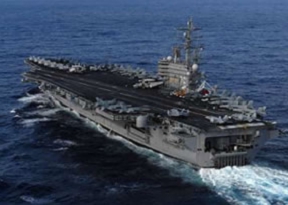
The aircraft carrier Ronald Reagan (US Navy photo)
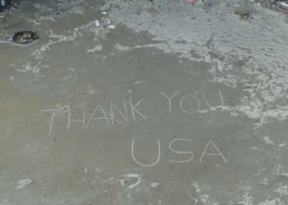
A message written on the ground in Onagawa Town,
Miyagi Prefecture: “THANK YOU USA” (US Navy photo)
The words of Lt. Gen Burton M. Field, Commander, USFJ
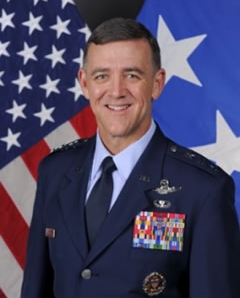 As the Deputy Commander for Joint Support Force – Japan (JSF-Japan) from March 24 to April 11 and as the Commander for JSF-Japan from April 11 to May 31, 2011, I worked closely with the Japanese Self-Defense Forces in support of “Operation Tomodachi.”
As the Deputy Commander for Joint Support Force – Japan (JSF-Japan) from March 24 to April 11 and as the Commander for JSF-Japan from April 11 to May 31, 2011, I worked closely with the Japanese Self-Defense Forces in support of “Operation Tomodachi.”
During this period, I was responsible in overseeing the entire operation, from search and rescue operations, assessing radiation levels, to ensuring a sw ift response to the areas affected by the disaster.
The operation demonstrated the U.S. commitment to Japan and tested the strength and capabilities forged and developed by the two allies over many years of bilateral training and coordination.
Even months after the disaster, I continued to lead the USFJ with a will to play an active role in recovery efforts. I was very impressed by the response of the Japanese government and the Japan Self-Defense Forces, and the will power and resilience of the people of Japan. It is an honor for the USFJ to serve as a member of the community in Japan and as a part of an ally in recovery efforts.
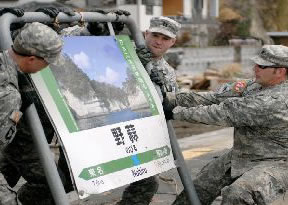
U.S. Army personnel engaged in railroad recovery work at
Nobiru Station on the Senseki Line in Higashi-Matsushima
City, Miyagi Prefecture (U.S. Army photo)
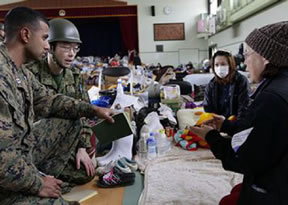
U.S. Marine Corps personnel listen to evacuees at a shelter
in Watanoha Elementary School in Ishinomaki City
(U.S. Marine Corps photo)
The words of Corporal Jason Chatman, US Marine Corps
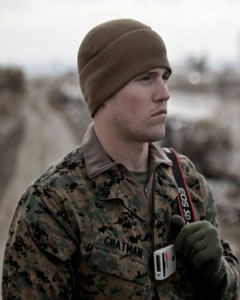 I served with the Forward Command Element, Joint Support Forces - Japan from March 12 through April 5, 2011.
I served with the Forward Command Element, Joint Support Forces - Japan from March 12 through April 5, 2011.
During this period, I went to more than 20 different missions including site surveys and transportation with the Japan Self-Defense Forces to assist in providing aid to the people affected by the Great East Japan Earthquake in Sendai, Miyagi Prefecture.
On the other hand, I, as a combat photographer, also documented the operations conducted in the area with photos and movies.
While working with the Self Defense Forces personnel and the people of Japan, the main thing that stood out to me was how resilient they were at a time of great tragedy. I was also impressed by the families really depended on each other.
I believe the results of the operation in a whole had a positive outcome. It has made our relationship stronger and we have created strong bonds with our Japanese counter parts. On this occasion, I hope the people of Japan acknowledged they can depend on us to help when needed because of the strong bond we've built together.
2. TOMODACHI
TOMODACHI is a public-private partnership that supports Japan’s recovery from the Great East Japan Earthquake, and invests in the next generation of Japanese and Americans in ways that further strengthen cultural and economic ties and deepen the friendship between the United States and Japan. The partnership is led by the U.S. Government and the U.S.-Japan Council, a non-profit organization, and is supported by the Government of Japan and corporations, organizations and individuals from both countries. It seeks to foster a “TOMODACHI generation,” the next generation of Japanese and Americans who appreciate each other’s cultures and countries and support the Japan-US alliance. To attain this vision, TOMODACHI implements and supports programs in such areas as cross-cultural exchange, education, entrepreneurship, and leadership development (visit http://www.usjapancouncil.org/ for details).
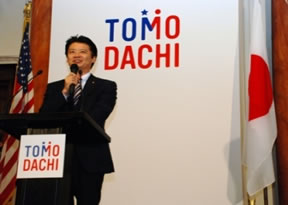
Foreign Minister Gemba speaks at a TOMODACHI event
(photo: The U.S.-Japan Council)
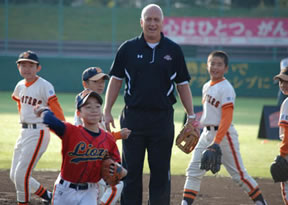
U.S. baseball legend Cal Ripken, Jr. runs a baseball clinic
for Japanese youth (photo: The U.S.-Japan Council)
Remarks by His Excellency John V. Roos, Ambassador of the United States to Japan
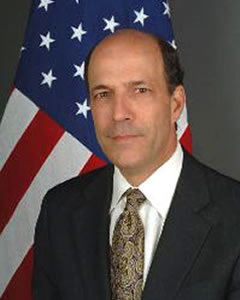 TOMODACHI embodies the deep relationship between our two countries. Immediately after the tragic events of March 11, we were proud to play even a small role in helping our friends in Japan through Operation Tomodachi to provide immediate relief and assistance to areas most heavily affected by the disasters. After March 11 there was also a tremendous outpouring of emotional, financial, and volunteer support from the private sector and from the American people, creating new connections between our two countries in all of these areas. In order to capture and sustain that spirit, we initiated TOMODACHI as our long-term effort to support Japan. In our conversations with national and local leaders, students, and volunteers, it became clear that in order to confront the post March 11 world, we must strengthen and greatly increase the connections between our young people in areas such as education, culture, entrepreneurship, and leadership. So through TOMODACHI, we are focused on investing in the young people who will soon lead both our countries, and the future of our relationship, that we hope will be founded upon the bonds formed by this brave new TOMODACHI generation.
TOMODACHI embodies the deep relationship between our two countries. Immediately after the tragic events of March 11, we were proud to play even a small role in helping our friends in Japan through Operation Tomodachi to provide immediate relief and assistance to areas most heavily affected by the disasters. After March 11 there was also a tremendous outpouring of emotional, financial, and volunteer support from the private sector and from the American people, creating new connections between our two countries in all of these areas. In order to capture and sustain that spirit, we initiated TOMODACHI as our long-term effort to support Japan. In our conversations with national and local leaders, students, and volunteers, it became clear that in order to confront the post March 11 world, we must strengthen and greatly increase the connections between our young people in areas such as education, culture, entrepreneurship, and leadership. So through TOMODACHI, we are focused on investing in the young people who will soon lead both our countries, and the future of our relationship, that we hope will be founded upon the bonds formed by this brave new TOMODACHI generation.

